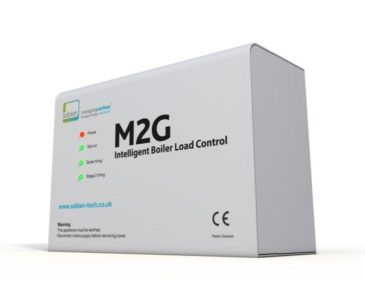
BOILER RUN-TIMES DON’T MEASURE UP SAYS TONY WILLIS
With many organisations having already implemented obvious energy-saving measures, additional so-called ‘quick fixes’ using retrofit technologies have considerable appeal. When they deliver on their promises, these technologies offer significant additional savings for a low capital investment with a short payback period.
The challenge is to ensure that such technologies will achieve the anticipated energy savings. A key element, therefore, is to understand how the technology works – and be convinced that the underlying technical principles make sense. You will also need to be reassured that any such technology will not negatively impact the existing heating systems to which it’s being applied.
A good example of the need for the buyer to be wary is the control of boiler dry cycling, where boilers fire unnecessarily to compensate for standing heat losses, rather than in response to a genuine demand for heat from the building.
Over the last few decades there are have been several attempts to retrofit technologies to tackle boiler dry cycling. Most have been unsuccessful, in terms of either not delivering real energy savings, or interfering with other control strategies or both.
Boiler run times
A case in point is the use of boiler/burner run-times to demonstrate energy savings. Some technologies ‘work’ by ‘time delaying’ the firing of the boiler, so that over a period of days or weeks the overall run-time of the boiler is reduced. This is then presented as an energy-saving.
However, if a two-stage or modulating burner is being used (as is the case with most commercial and industrial boilers) the run-time is not indicative of how much gas or oil is being consumed. Indeed, delaying firing is likely to result in the burners running at full capacity when firing is resumed to retain the original boiler temperature.
Run-time in this case does not tell you whether the boiler was firing at full capacity or was modulating at a lower capacity – and is therefore not necessarily a reduction in kWh or fuel saved.
Validation
Other criteria for validating energy savings are also important. For instance, a direct comparison of boiler gas consumption between two years (e.g. the most recent winter and the one before it) does not allow for weather variation between those two winters. So this data needs to be adjusted using Degree Day information supplied by the Meteorological Office.
Where two different periods are being compared, it is also important to assess whether there have been any changes in building usage or to the thermal performance of the building fabric during that time.
Taking advantage of retrofit technologies, therefore, depends on selecting a technology that is based on sound engineering principles and ensuring the subsequent validation process takes account of any variable factors that might skew the results.
To that end, we strongly recommend that measurement and verification is carried out in line with the criteria established within the International Performance Measurement and Verification Protocol (IPMVP). Any technology provider should be able to help with this.
Further information: www.sabien4.wpengine.com




